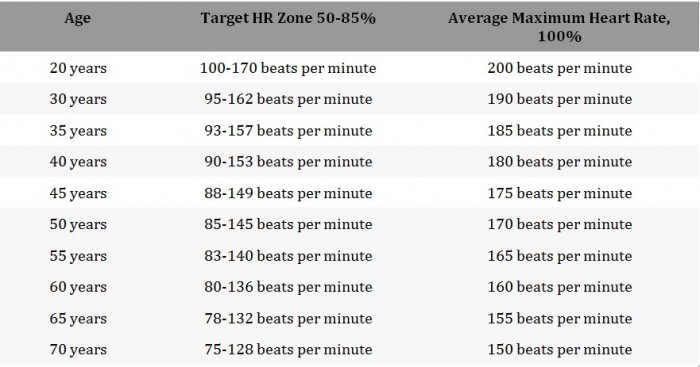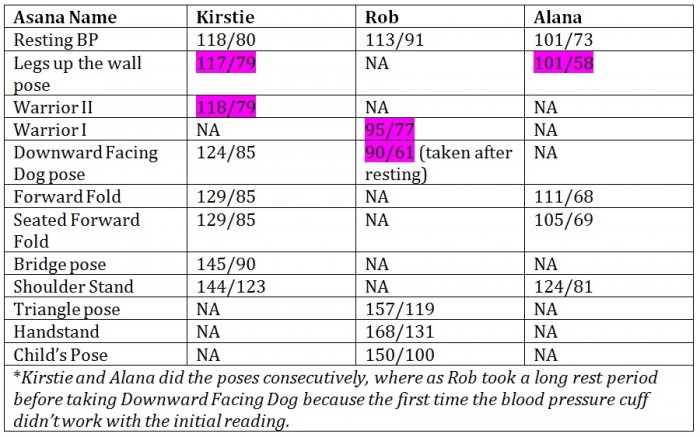I wanted answers to whether or not Viparita Karani, Legs Up the Wall pose, was indeed safe.
I had just read another blog that spoke of all these wonderful benefits of the pose from calming the nervous system, resetting our melatonin levels vis-à-vis the pineal gland, easing anxiety and stress, therapeutic for arthritis, headaches, high blood pressure, PMS, menopause, cramped feet and legs, relieving low back pain and calming the mind.
Wow, that is a lot of benefits for one pose. Is it even true, or does it fall under the many myths of yoga asana, where the benefits are not based on research or any measurement of outcomes?
I really enjoy practicing and teaching Viparita Karani. It falls under the category of inversions (heart is higher than the head), which for many are contraindicated due to the raise in blood pressure. I emailed my colleagues at the yoga studio and asked them if they were up for an experiment. Would they be willing to measure blood pressure changes in asana? Of course, they said yes.
We met and filmed the experiment to document it. We started by measuring resting blood pressure in a seated position. Then we did a variety of asana and measured how it affected blood pressure. Each of the practitioners has practiced for over 18 years and are healthy. What we discovered is the blood pressure increased on most asana except Viparita Karani and Warrior I and II.
We chose measuring blood pressure because it meets the gold standard in measuring outcomes in medicine. What we are measuring with blood pressure is the pressure in the arteries during and between heart beats. The upper reading is the systolic (pressure in the arteries when heart beats) and lower diastolic pressure (pressure in the arteries between heart beats).
A desirable level of blood pressure at rest in a seated position is less than 120/80 mm Hg and exercise can help keep it from rising as you age.
According to the Mayo Clinic, “the American Heart Association recommends you get at least 150 minutes of moderate exercise, 75 minutes of vigorous exercise or a combination of both each week. Aim for at least 30 minutes of aerobic activity most days of the week. If you can’t set aside that much time at once, remember that shorter bursts of activity count, too. You can break up your workout into three 10-minute sessions of aerobic exercise and get the same benefit as one 30-minute session.”
The goal is to meet your target heart rate, which changes with age. Measure your pulse by taking your first two fingers and press lightly over the blood vessels on the thumb side of your wrist. Count your pulse for 10 seconds and multiply by six to find your beats per minute. The goal is to stay between 50 and 85 percent of your maximum heart rate.
The chart below is a summary of target and maximum heart rates to help you determine if you are meeting your goals.
Below are the results of some of the asana we measured.
Keep in mind we did this for fun—this is not a formal scientific experiment. The asana where the blood pressure decreased slightly are highlighted.
We can say without hesitation that Viparita Karani lowers diastolic blood pressure. I would still question the long list of other benefits and whether or not it is a significant reduction. That would take a formal study.
We tested the other inversions such as Handstand and Shoulder Stand. The blood pressure jumped up significantly and in some cases increased beyond the recommended target zone. It demonstrates that these poses are indeed unsafe for individuals with hypertension (high blood pressure), heart disease and history of stroke.
What I found interesting is the increase in blood pressure in many of the poses. I can imagine how doing a sequence of poses for 30 minutes is therapeutic exercise for my heart. I was surprised by the high increase in Child’s pose, since it considered a safe neutral posture.
Additionally, Downward Facing Dog pose had a rise in blood pressure, thus, it really isn’t a resting posture. This will definitely influence my sequences in how I incorporate Child’s pose and Downward Facing Dog. I would more likely choose Corpse pose or Legs Up the Wall pose now for rest.
In the end I can be comfortable recommending Viparita Karani, Legs Up the Wall pose, as indeed safe.
Love elephant and want to go steady?
Sign up for our (curated) daily and weekly newsletters!
Author: Kirstie Bender Segarra
Editor: Catherine Monkman
Photo: Author’s Own, Kellinahandbasket/Flickr














Read 7 comments and reply